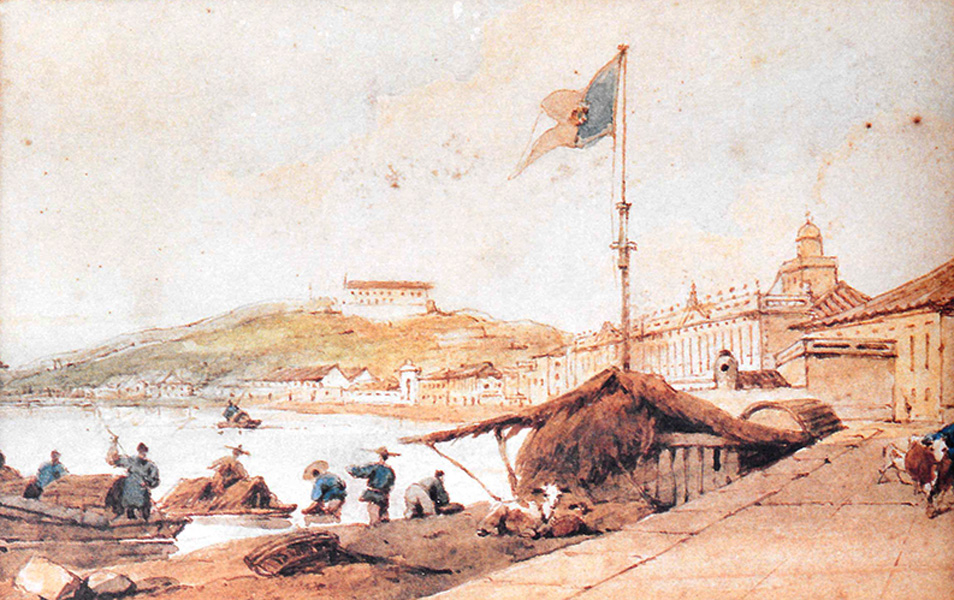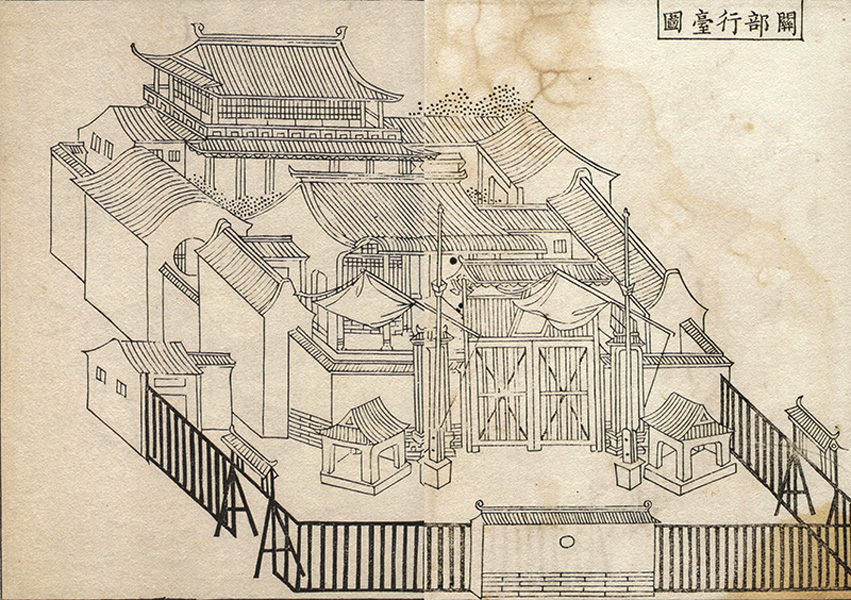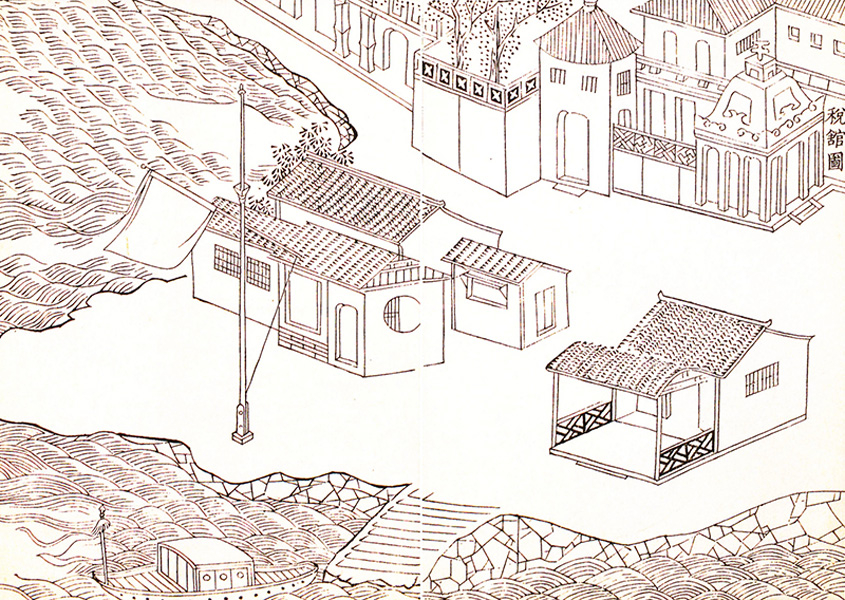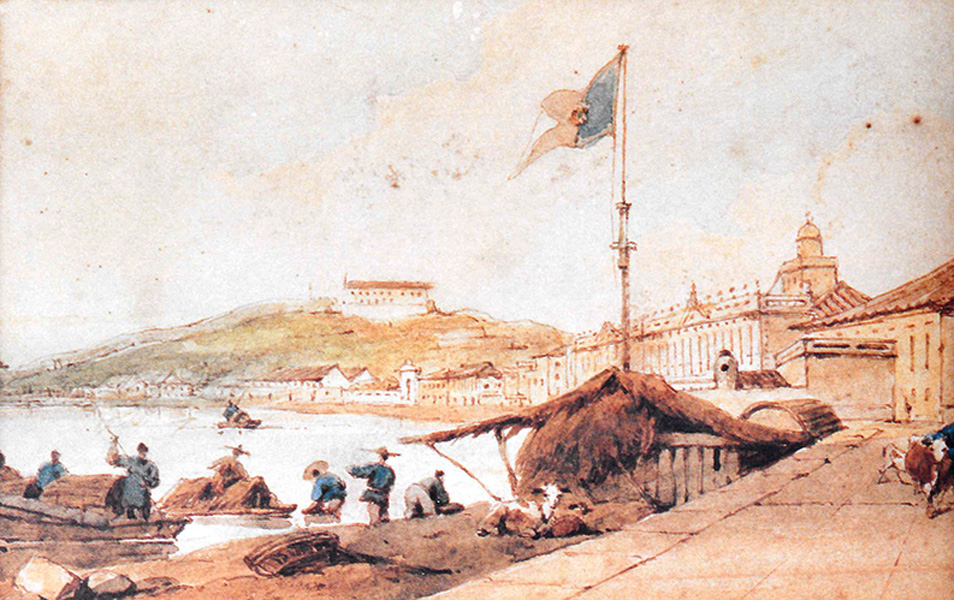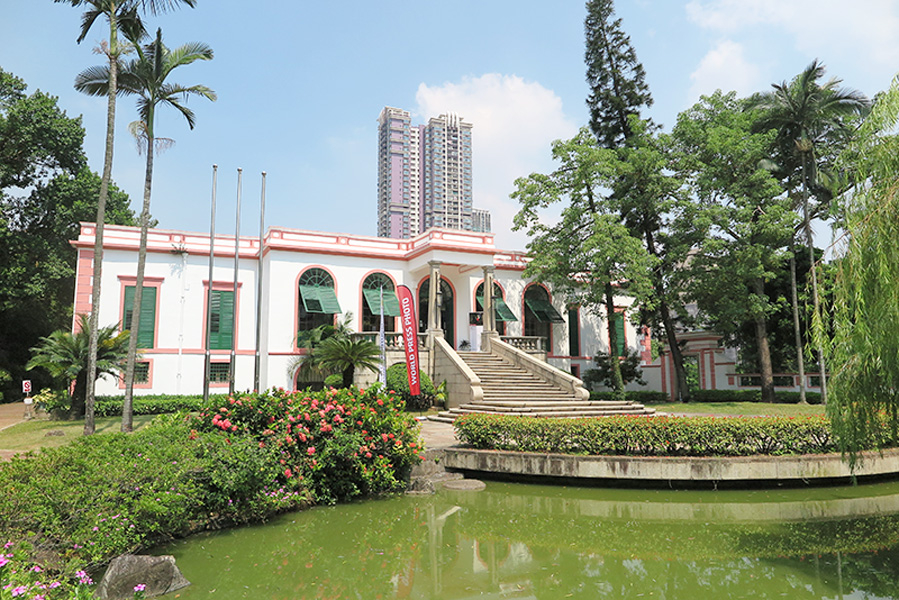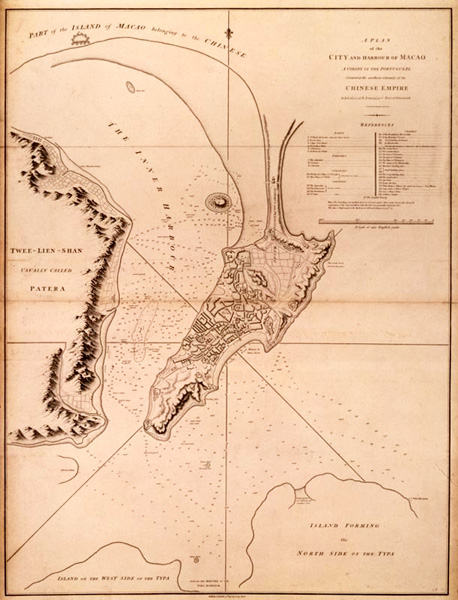Emperor Kangxi (康熙) of the Qing dynasty (清朝) lifted the maritime trade ban and opened four ports to foreign trade in 1684. Customs was set up for administrative purposes, one of which was the Canton Customs. The Canton Customs established a customs service branch and four levy halls in Macao (Macau) responsible for collecting tariffs, examining foreign vessels, and issuing entry clearances.
The Qing court continued to refine its foreign trade policies in the 18th century as Western powers including Britain, France, Sweden, and the United States were eager to trade with China. The Qing court designated Guangzhou (廣州) as the only port for foreign commerce in 1757. The court also forbade foreign merchants from staying in China outside the trading season, which lasted from April to September. The merchants could, however, reside in Macao in the other months if they chose not to return to their home countries. Macao thus became a winter residence for them. Such an arrangement turned Macao into Guangzhou’s outer port and the only Chinese city that allowed long-term residence of foreign merchants.
Attracted by Macao’s significance in trading with China, the British tried to occupy it, but was deterred by the Qing’s strong stance. Under its prosperity, though, Macao became a secret warehouse for opium brought by foreign merchants, planting the seed of the First Opium War.
|
|
How did Macao become a winter residence under the Canton system? |
|
|
See answer below. |
A portrait of Shang Kexi (尚可喜), the Prince of Pingnan (平南王), by the Dutch envoy Joan Nieuhof.
To contain the Taiwan-based (台灣) Zheng clan (鄭氏) regime which hoped to restore the Ming dynasty (明朝), the Qing court issued the Great Frontier Shift in 1661. The Chinese who lived outside Macao were ordered to move inland, and Portuguese in town were ordered to move inland or leave China. The Great Frontier Shift was not implemented in Macao, but Shang Kexi and Lu Xingzu (盧興祖), the Viceroy of Guangdong (廣東總督) extorted a large amount of silver from the Portuguese in the name of the edict.
Although Macao’s maritime trade was interrupted, Guangdong officials privately sent merchant ships there for trading, but were later exposed. In 1667, Emperor Kangxi (康熙) took over the reign and ordered an investigation over Guangdong official’s illicit commercial activities and a replanning of Macao. Upon hearing the news, Lu committed suicide, while others involved in the misconduct were removed from their posts. In the end, the emperor exempted Macao from the Great Frontier Shift and kept its land trade routes with mainland China. This arrangement lasted until 1684 when the Qing court lifted the maritime ban.
According to Aomen Jilüe (A Brief on Macao, 《澳門記略》) compiled by Yin Guangren (印光任) and Zhang Rulin (張汝霖) in the Qing dynasty, the customs service branch in Macao sat near what is now the Rua dos Ervanários.
The four levy halls under the Macao customs service branch are also mentioned in the book. They sat near Rua do Teatro, A-Ma Temple, Praia Grande Bay, and the Border Gate (Portas do Cerco) .
The Macao customs service branch was established in 1688. Being one of the seven major branches of the Canton Customs, it dealt with foreign trade affairs and had four levy halls affiliated to it. The levy hall in Rua do Teatro dealt with the levies on domestic and foreign merchants. The one in Praia Grande Bay was responsible for the inspection of foreigners and vessels entering Macao. The one near A-Ma Temple supervised Chinese merchants in Macao and fishing boats to prevent levy evasion. The one at the Border Gate collected levies on overland trade.
A depiction of Praia Grande Bay in the early 19th century by the British painter George Chinnery. Praia Grande Bay was home to many well-off western merchants during winter seasons. (Property of Hongkong and Shanghai Banking Corporation)
The Chief Superintendent of British Trade in China William John Napier’s mansion in Praia Grande Bay. (Property of Hongkong and Shanghai Banking Corporation)
The site of the Orient Foundation was a villa belonged to the wealthy Macao merchant Manuel Pereira in the 1770s. The villa was later leased to the British East India Company and transformed into the residence for the superintendents and managers of British trade in China.
A map of Macao’s urban area and ports drawn by the British B. Baker in 1796. The Macao city took the south of the Peninsula, outside of which were Chinese villages.
The guild merchant Wu Bingjian (伍秉鑑). His Ewo (hong) monopolised China’s maritime foreign trade in the Qing dynasty. He was one of the richest people in the world that time. (Photo credit: Fotoe)
From left to right: Danish, Spanish, American, Swedish, British, and Dutch merchant halls in Guangzhou’s (廣州) business quarter. (Photo credit: Fotoe)
After a British assault in 1808, the Viceroy of Liang-Guang (兩廣總督) Bailing (百齡) reinforced Macao’s defence, including the military bases in Mong-Há and the Border Gate. The Mong-Há garrison was near Sin Fong Temple, where the shrine for the Lord of the Soil and the Ground in the garrison stands as a testimony to this history.
In early 19th century, the British sought to make Macao its springboard for market expansion in China. In 1802, British fleets reached the shore of Macao, but the Portuguese refused to let them land and turned to the Qing court for help. In the end, the British retreated.
However, Britain did not give up on Macao. In 1808, the Napoleonic Wars gave the British an excuse to enter Macao, claiming that they would protect Macao from a French invasion. 300 British soldiers came to Macao (the number later rose to 800) and promised to side with the Portuguese in defending Macao. As the British soldiers occupied Macao, Chinese officials started to reinforce their garrisons in the neighbouring areas. Upon hearing about the British landing, Emperor Jiaqing (嘉慶) cut food supply to Macao and sent troops to repulse the British. After nearly three months of conflicts, British soldiers withdrew from Macao. The Viceroy of Liang-Guang Bailing then tightened regulations over trade in Macao and Guangzhou in 1809.
|
|
How did Macao become a winter residence under the Canton system? |
|
|
Over time, Guangzhou built a comprehensive system for the management of trade and foreigners in Macao. Chinese officials dispatched to Macao would promptly handle any disputes involving foreigners or hand over the matter to the Portuguese council. The Qing court also set up an administration to deal with the entry clearance and levies regarding foreign merchant ships. Apart from its ideal location, Macao was made a formal residence for foreigners outside the trading season for administrative purposes. |
Photo courtesy of Mr. Alex Lou, Vice Chairman of The Heritage Society, unless otherwise specified.




